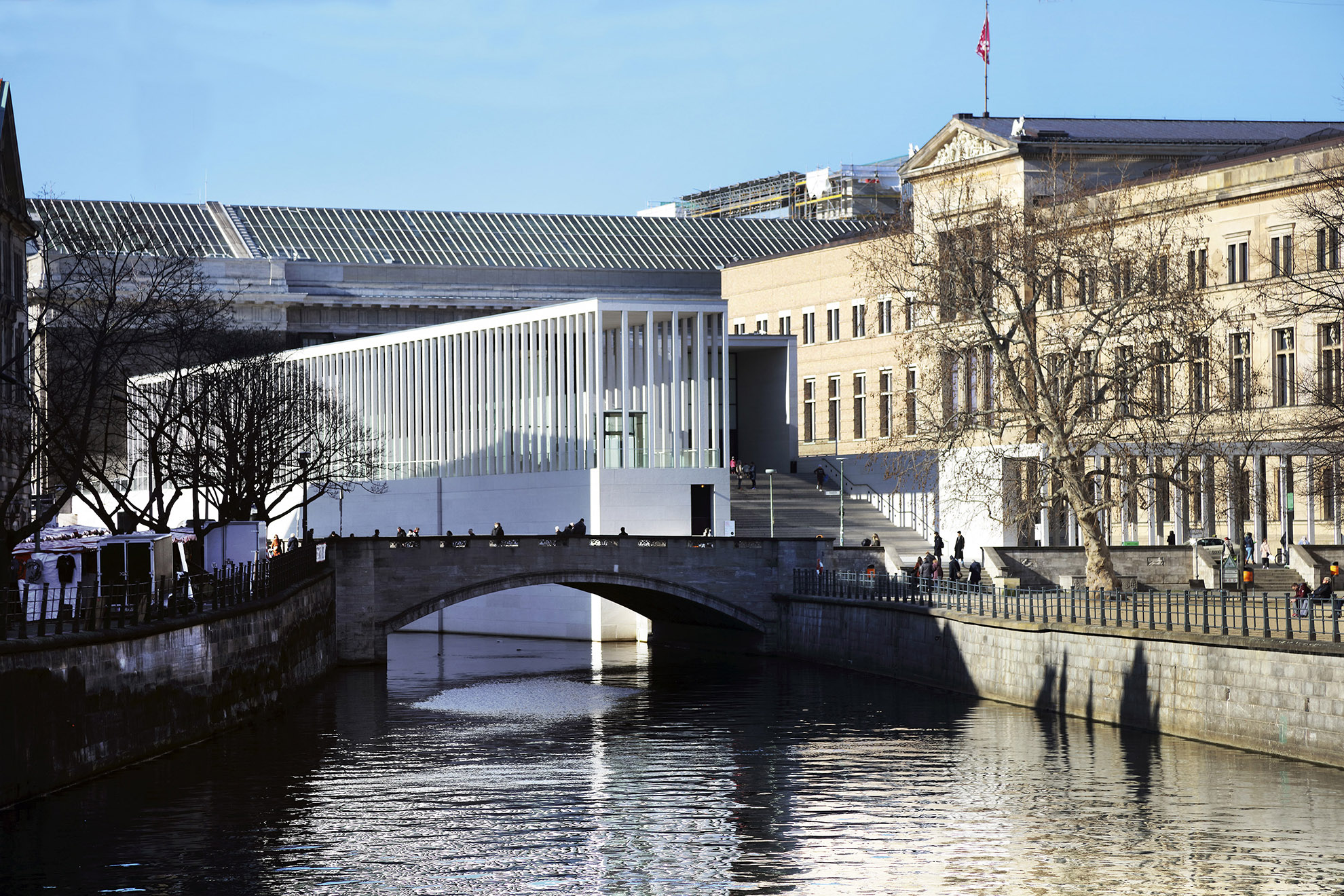A Window into Germany

The Spreebogen government district on the bend of the River Spree is the most important government location that Greater Berlin has ever had. It was the seat of the Reichstag parliament during the imperial era and became the centre of the Weimar Republic in the 1920s. It was also the planned site of the Great Hall, conceived by the Nazi leadership to be the largest building in Berlin and the centrepiece of the capital of the Reich. It became an outlying area in limbo when the city was divided, but is now home to a complex of government buildings, the state’s most visible presence in the capital. The Spreebogen district is the youngest of Berlin’s large government districts – much younger than the palace area and younger than the Wilhelmstrasse government quarter. It illustrates how the spatial focus of the state’s presence in Berlin has migrated westward.
Photo: Philipp Meuser, 2020
In 1920, Berlin had been Germany’s capital for less than half a century. Unlike London and Paris, Berlin was a far cry from being the undisputed centre of a large European country. The city was more like Rome and Moscow, a young capital with a mixed reputation. The Greater Berlin Act of 1920 did not include any provisions that clearly regulated its status as the capital of the young Weimar Republic. Nevertheless, the state as a whole has been instrumental in shaping the development of the city since then. Today, federal projects influence public debate and, increasingly, the image of the capital. The state has made the city, much to either the joy or annoyance of Berliners – and has done so for centuries. The difference now is that the capital has become very popular abroad and is seen as a cheerful and tolerant city in a country that is often underappreciated. Berlin has another anniversary coming up in 2021: 150 difficult years as the German capital.
A state’s global standing and economic performance largely depend on the beauty and the prestige of its capital. […] Germany and its importance in the world are judged on the impression that the imperial capital makes on other countries. […] Berlin does not view its tasks from a local perspective, but rather from the point of view of the whole of Germany.
Tourist advertising for Berlin (has) to reckon with the empire’s tense hostility towards Berlin. […] Berlin is like New York in the United States. People admire its rapid growth, but can’t quite come to love it yet. One of the main aims of Berlin tourism advertising is to dispel prejudices against the capital.
Gustav Böß,
mayor of Greater Berlin from 1921 to 1929
Berlin Today, Berlin 1929
Locations for Parliament
and Government
In 1920, the state’s presence in Berlin was centred in three locations that defined the city: Hohenzollern palace, which was actually a Prussian building; Wilhelmstrasse, a symbol of governance; and Königsplatz, the seat of the Reichstag and the German state’s most powerful building in Berlin. The palace was a masterpiece of architecture that had evolved over centuries, but by the late nineteenth century, it had long since lost its role as the sole centre of power. Wilhelmstrasse rose to become the official government headquarters of the new empire and became a synonym for the German government. When the General Staff building was built between 1867 and 1871, it became the ‘soul of the army’ and marked the beginning of government building moving into the Spreebogen area around the bend of the River Spree. Building in the area reached its peak with the construction of the Reichstag between 1884 and 1894, and this also marked the end of construction in the period.
The Spreebogen District
No other area of the city conveys the brutal history of the state’s presence in Berlin as vividly as the Spreebogen district. It has been the seat of republican, dictatorial, allied and now democratic rule in the city.

Photo: Thomas Spier, apollovision
Wilhelmstrasse
During the imperial era, many people began to notice a distinction emerge between a western ‘imperial side’ and an eastern ‘Prussian side’ of the Wilhelmstrasse government precinct. After the Second World War, the headquarters of the East German government was located here – in the state’s most important building.

Photo: Thomas Spier, apollovision

Photo: Thomas Spier, apollovision
Berlin Palace
Berlin Palace ceased to serve as a seat of power at the end of the war and the empire in 1918. It has primarily served as a museum since the 1920s. The ruins of the palace were demolished in 1950 during the German Democratic Republic (GDR) and a state forum was built in its place. The palace is currently being resurrected as the Humboldt Forum, which has proven to be extremely controversial.

Photo: Jacob Stefane;Berlin State Archive, F Rep. 290 no. 377231

Photo: Thomas Spier, apollovision

Photo: Thomas Spier, apollovision
Gifts for All: Cultural Buildings
The state built the capital both for itself and to enrich our culture in general. Among the gifts from the federal government are the new Building Academy, the Museum of Design for the Bauhaus Archive, the Monument to Freedom and Unity, the Humboldt Forum and, of course, the Museum of the Twentieth Century at the Kulturforum. These gifts have not always been welcomed and many are controversial, but all in all, they enrich the city.

Photo: Thomas Spier, apollovision

Staab Architekten

Photo: Thomas Spier, apollovision


